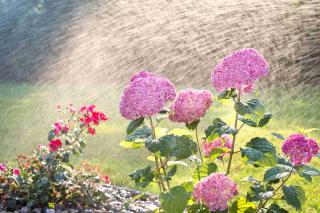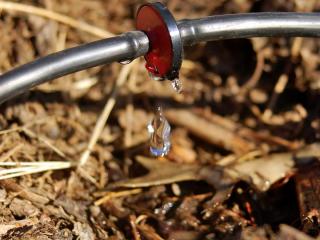

Adapt your garden to summer climate conditions with eco-friendly watering habits. This will give your plants the upper hand on drought.
Has your garden ever suffered from drought in the past?
Get ready for it starting early in spring with the planting of resistant heirloom and local varieties.
In regions where summers tend to be very dry, forget about water-loving plants altogether! Go for drought-loving plants instead.
This a great way to make gardening a cinch and work towards saving the environment, too.

If your vegetable patch is in direct sunlight, plant a field hedge around it in fall to protect it from the sun, all your plants will take advantage of its soothing shade.
Teach roots to dig into the soil for water by maximizing your watering. For instance, water your tomato by watering abundantly in a furrow around 8 inches (20 cm) from the foot of the plants. A month later, move the furrow 8 inches (20 cm) further away. This method teaches the roots to grow to reach water at a greater distance or deeper down.

Collect rain water from the spout and use a watering can for flower beds or garden boxes that require a lot of water.
M.-C. H.